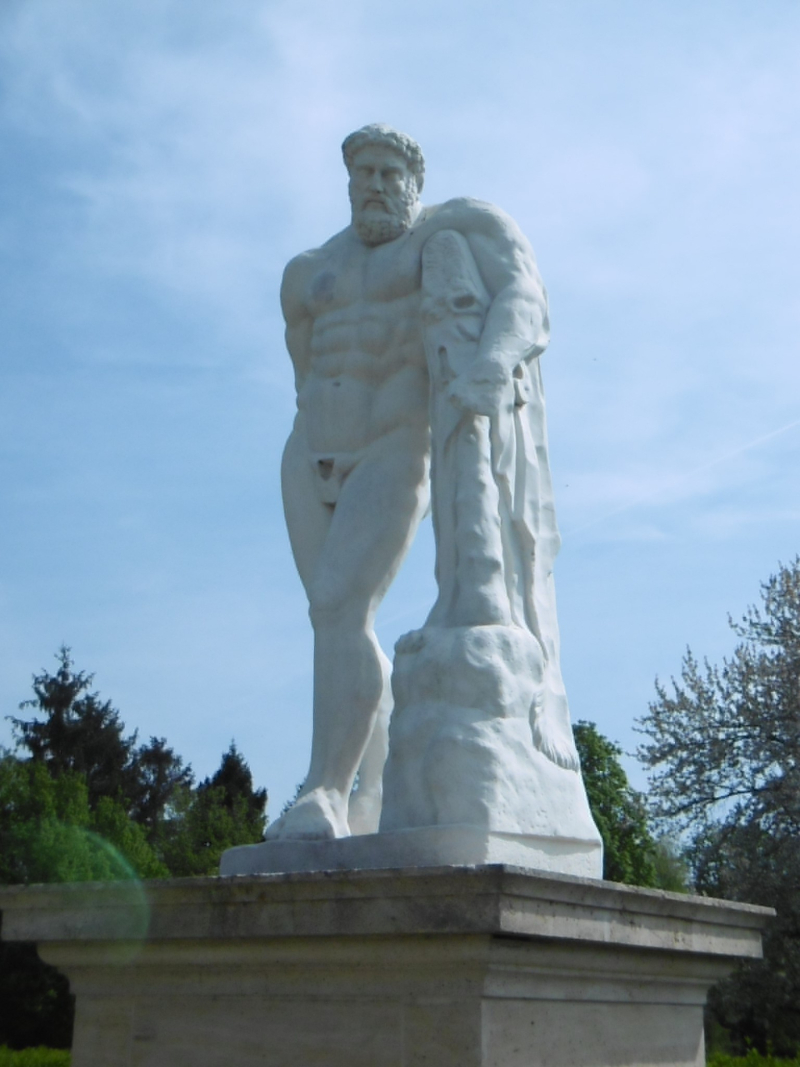Farnese Hercules
The statue was carved in marble by Italian artist Giovanni Comino in the years 1670-1672. It’s a copy of a copy. The original work, long lost, is attributed to the Greek bronze sculptor Lysippos, who worked in the fourth century BC. We know of its existence from the numerous copies made of it. One copy from the third century AD is signed by Glykon of Athens.
Glykon’s reproduction was lost for a time as well. Uncovered in 1546 at the Roman Baths of Caracalla, the statue of Hercules (the hero’s Latin name) was acquired by Alessandro Farnese (1520-1589), who assembled one of the great sculpture collections of the Renaissance. The hero’s resting pose then became known as the Farnese Hercules.
Born to the mortal woman Alcmene, which means “wrathful,” fathered by Zeus wearing her husband’s guise, Heracles was given to fits of rage. In one such fit, he slaughtered his wife and children. In remorse, he sought penance and gave himself into the servitude of Eurystheus, who assigned him a series of labors.
The first labor was to slay the Nemean Lion, which terrorized the countryside. Its teeth could cut armor, and its hide could not be pierced. Heracles whacked it with his club, and skinned the beast with one of its own fangs.
More labors followed, twelve in all. The eleventh was to steal the apples of the Hesperides. Growing from a tree in the goddess Hera’s garden, these apples were of pure gold, tended by the nymph daughters of Atlas, and guarded by a hundred-headed dragon.
Heracles went to the end of the earth, where Atlas, a titan, held the world on his shoulders. Heracles asked where his daughters kept the apples. Atlas agreed to tell him only if Heracles would take his burden for a spell, so he could catch his breath. Heracles sensed a trick, so he lifted the sky, thus giving Atlas some respite without accepting the object of the titan’s condemnation. Information gained, the hero hurried on to the garden, slew the dragon, and purloined the apples.
Glykon’s Farnese Hercules was moved, with much of the Farnese Collection, in 1787 to the Museo Archeologico Nazionale in Naples. Comino’s rendition was installed in the gardens at the Château de Sceaux, south of Paris, in 1686. It was moved in 1793 to the Tuileries Garden, where it lived its still life for over two hundred years. In 2010, the statue returned to Sceaux, protected from weather in the Orangerie. Two more copies were made, both from a mold of Glykon’s work. One occupies the place at Tuileries; the other the flower garden outside the Orangerie at Sceaux.
Heracles pauses to contemplate his twelfth and final labor: to capture Cerberus, the three-headed dog who guards the gates of Hades. A task Eurystheus believes impossible…
